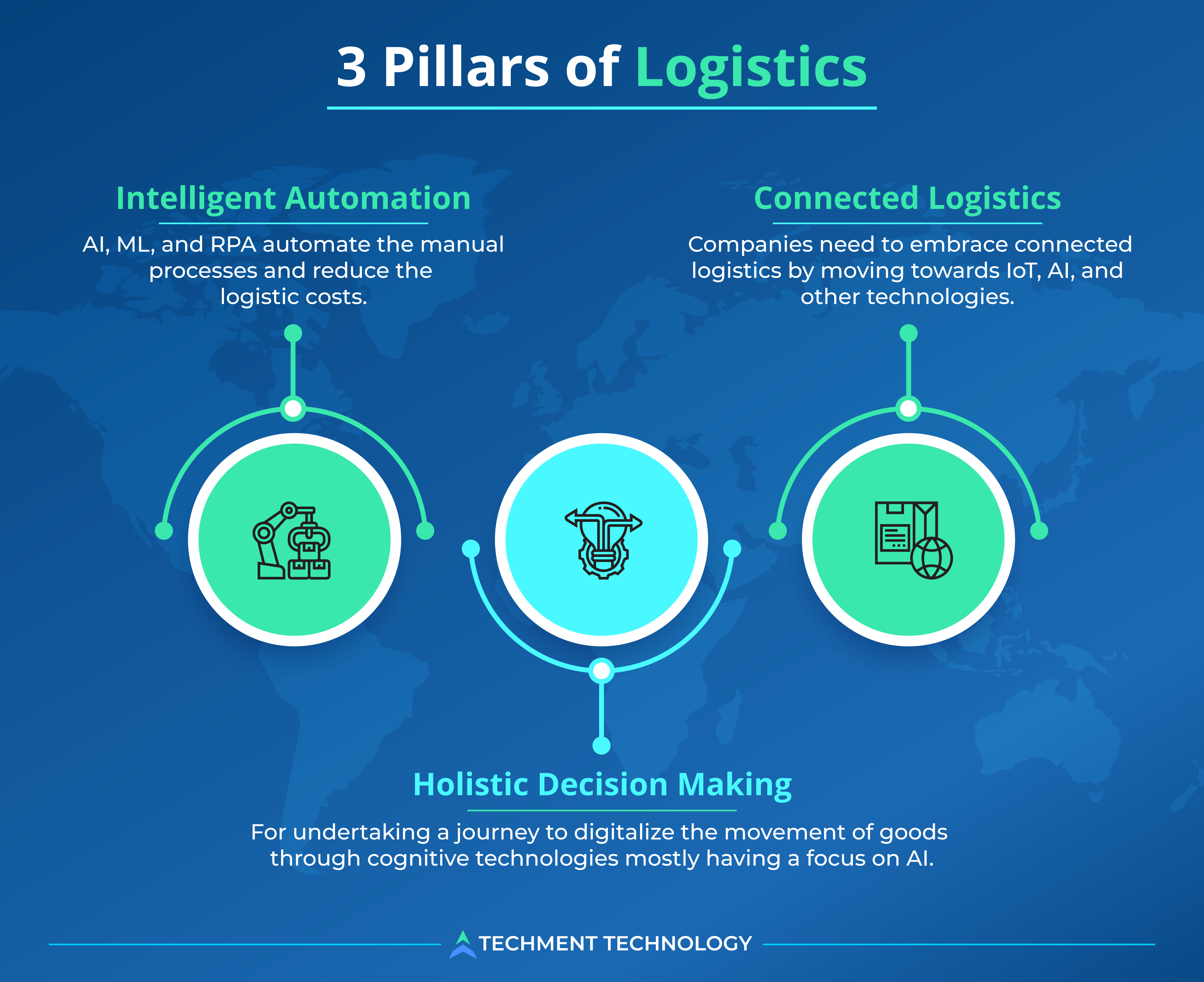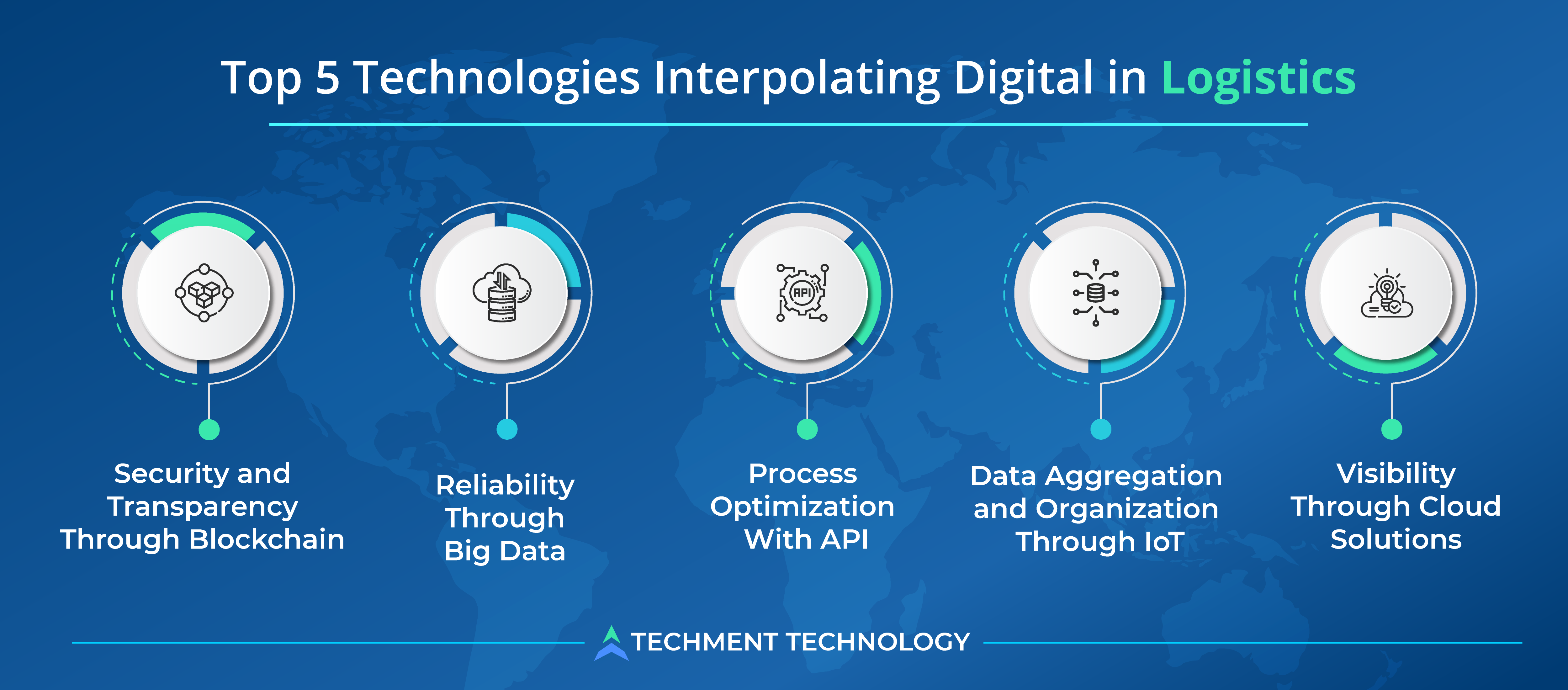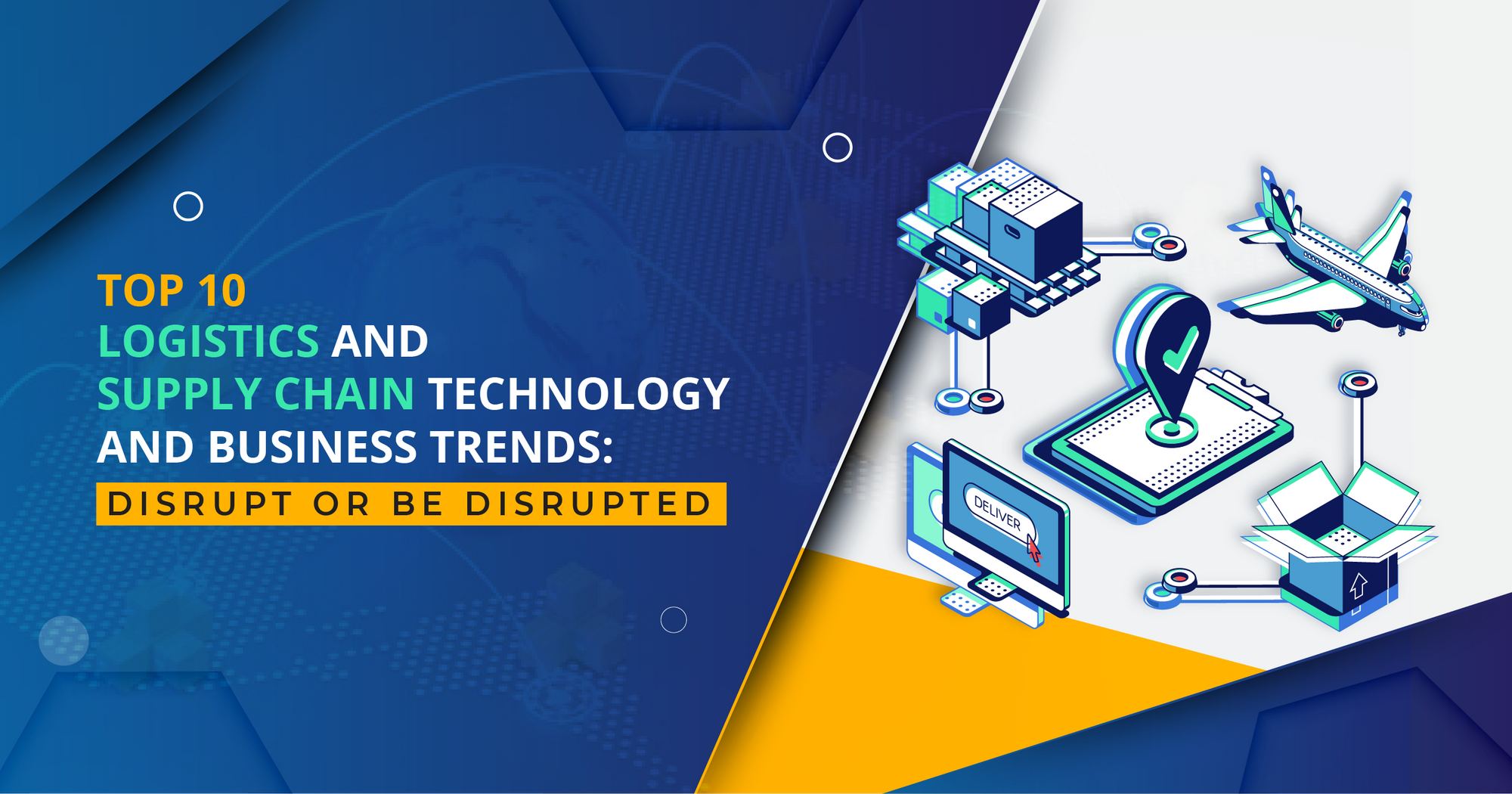Intelligent Technologies Strengthening Logistics Ecosystem
Known for its massive use of manual processes and large amounts of data stored in different ways and in different places, the logistics industry has perhaps the most to gain from the implementation of new technologies. The supply chain and logistics has seen progress in areas such as augmented and artificial intelligence, advanced analytics, and automation. These technologies have evolved faster than ever as startups with even newer solutions and innovations continue to flourish. A lot of pressure comes from customers in the form of demand for faster and cheaper delivery than ever before.
To keep the merchandise in perfect condition, the transportation of goods from suppliers to the final destination has to be agile and transparent. For companies, removing the roadblocks from key stakeholders, legacy systems, and global logistics are becoming crucial as they are moving towards digitizing their movements of goods, especially when it comes to international shipping and the movement of sensitive goods.
Since Technology is driving most change, the three main strategic thinking are defining the future movement of goods i.e.,

Holistic Decision Making: For undertaking a journey to digitalize the movement of goods through cognitive technologies mostly having a focus on AI.
Connected Logistics: Companies need to embrace connected logistics by moving towards IoT, AI, and other technologies. Communication systems powered by IoT, supply chain management, vehicle tracking, and IT securities are four pillars of connected logistics systems.
Intelligent Automation: AI, ML, and RPA automate the manual processes and reduce the logistic costs.
Connectivity Through Technology: Community connections are now more strong with the help of cloud partnerships, data-sharing platforms, cyber standards with partners, IoT solutions with partners, digital freight platforms, asset-sharing partnerships, and others. Especially the emergence of blockchain providing the easy accessibility of information, its resistance to modification of data, and enhanced security has revolutionized the current logistics practices. Advancement through RFID in IoT has made tracking easier than before.
Top 5 Technologies Interpolating Digital in Logistics
Megatrends like Blockchain, IoT, RPA, and data have rippled across multiple sectors including logistics, in order to make it more sustainable, flexible, and efficient as the industry continues to grow. Digital logistics fuels agility that modern supply chain practitioners need to incorporate to improve distribution methods, warehouse management, and fulfillment data.
Logistics need to sync with these technologies to be faster and smarter than their competitors:
- Security and Transparency Through Blockchain: Logistics is managed more effectively through blockchain which helps participants record price, date, location, quality, certification, and other relevant information. Blockchains’ limited access protocols, and enhanced security, provide a reason to adopt them in the security frontier. Every transaction is visible to participants without alteration eliminates the chances of fraud i.e., double brokering and shippers can authenticate transactions through time stamping.
Tech giants IBM and Maersk started a collaboration agreement known as “TradeLens” to create a new global platform built on blockchain and eliminate inefficiencies from paper-based processes. TradeLens uses IBM Blockchain technology to empower multiple trading partners to collaborate by establishing a single shared view of transactions without compromising details, privacy, and confidentiality.

- Data Aggregation and Organization Through IoT: Asset data can be available in real-time and at a low cost in a central location, enabling entirely new business models. The objects can collect or transmit data themselves via sensors or with the necessary electronics like transport containers which require an “IoT Edge Device”.
Logistics service providers are able to gain traction of unaccounted information, receive valuable insight into the data systems, and can control transportation, which has imparted transparency.
Adding RFID (Radio-frequency Identification) with IoT gains higher transparency in the entire lifespan and movements of goods. With significant improvements in visibility throughout the supply chain, the benefits of RFID and IoT systems in transportation and logistics are proving to be substantial for many large global companies. - Process Optimization With API: Exchange of information between different applications is done by cloud-based intermediaries i.e., API. A shipping API will pull data from external servers and display shipping information to you. They can serve as a single source of tracking information for multiple carriers. This means it acts as a middleman between freight companies and customers. Moreover, APIs provide:
Visibility in Real-Time Tracking: Goods can be easily traced by pulling GPS coordinates through tracking API. Also, it tells the information about the estimated arrival time of delivery.
Paperless Documentation: A shipping API goes a long way in making shipping documentation safe and efficient to manage. These APIs digitally generate and store BOLs (bill of lading) and digital shipping labels instantly once a shipment has been booked, saving hours of work with document management. - Reliability Through Big Data: Big data is used for predictive analysis of supply chain logistics and helps management forecast and estimate freight volume based on days, weeks, or months. Routes, effective communication, and costs are important attributes in the logistics industry for better decision-making and quicken the last-mile delivery.
In Shipment: Supply chain logistics is affected when shippers and carriers are unaware of the delivery time but the bottleneck can be prevented further if the data is known.
Route Optimization: For fleet management and marine navigation, big data in logistics can help optimize routes to incorporate weather, traffic, and timing.
- Visibility Through Cloud Solutions: Cloud and SaaS allow multiple partners to connect easily, providing visibility into logistic processes and data. Cloud also breaks down communication silos streamlining collaboration between different stakeholders and trading parties, hence increasing harmony.
It’s important for companies to start looking at the risks and opportunities in logistics and try to strike the right balance between disruption for positive change and disruption that can put the industry in a downturn.
Asset Productivity and Collaboration Will Actively Shape the Future of Logistics
New entrants to the logistics industry are looking to use new technologies to enter the industry. To date, most of them are focusing on establishing “asset-light” parts of the value chain. Logistics companies also need to cut costs and also eliminate what does not matter and focus on key areas of interest – such as digitization, resource productivity and innovation – and invest more in supporting key capabilities and business value propositions. Finally, with new disruptions to come, companies must anticipate changes in their capabilities. To do this, transport and logistics companies must build strong relationships with their key customers, pay attention to the markets they target, and actively shape the future.
Focus on Timing & Last Mile Delivery: For carriers, this likely means developing the ability to analyze and act quickly on the information gathered and creating a culture of database decision-making. To respond to the new world of demand, logistic service providers must understand how different new technologies and practices are evolving and must master the timing. Knowing the stages of change that lie ahead for the entire market, particularly for the last mile, can be the key to knowing which investments to make.
Collaboration: Logistics service providers need to keep pace with trends and advancements to bring rapid adoption of standardized interfaces and collaborate with logistic partners. Companies need to focus on the commitment they have made to their business partners and customers. As technology continues to evolve and advance, businesses must adapt and change over time.
 All Posts
All Posts
